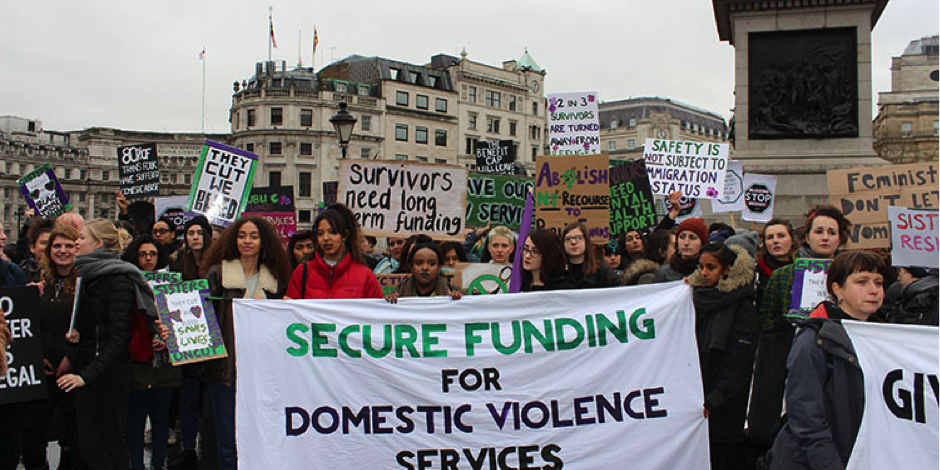When we conceptualise domestic violence (DV), a few images spring to mind. The young wife who faces violence from her husband but is fearful of the cultural stigma she will face if she reports the crime. The child who regularly endures violence from their family, and does not have the faculties and resources to ask for help. Violence against women and children is almost always conflated with abuse perpetrated by intimate partners and family members. What we fail to recognise is that it is also enacted by individuals, institutions and structures that prevent women and children from living safely and securely.
Increasingly, we have seen women’s movements bring domestic violence into public consciousness – moving it from being thought of as a private family matter to a global issue that can affect all women, creating laws and policies, and domestic violence hotlines and shelters. The resulting reliance on the state, particularly law enforcement, to address and end intimate partner violence, whilst providing structures on which women can lean, presents challenges, especially when domestic violence services are underfunded. Arrest laws can often result in both survivor and perpetrator being arrested, child protective services sometimes remove children from mothers because they’re victims of domestic violence, nuisance laws lead to women being evicted from their homes for calling the police too many times on their abusive partners, and women are imprisoned for defending themselves against abusive partners. These are just some of the ways that states can fail survivors of DV and cause further harms to survivors if the correct DV services are not provided. The issue here is not whether the state ought to be involved in the provision of DV services: it absolutely must. The question instead is: why are states, given the prevalence of DV, getting away with cutting services for the most vulnerable?
It is initiatives such as PROTASIS that provide us with a solution. Moreover, cuts to DV services do not simply exclude women from support, but actively uphold systems of abuse. What better way to assist perpetrators than make it almost impossible for their survivors to receive the support they need to flee? PROTASIS ensures that men, women, and children of all backgrounds are met with appropriate services, and by trained officers who understand how to navigate delicate situations such as DV. What this allows for is a tailored approach to dealing with violence against women which increases rates of reporting DV, and an approach that remains independently funded by the EU regardless of national politics.
More than anyone else, domestic violence services comprehend and relate to the abusive dynamics of power and control. Ironically, this is mirrored in the way austerity-driven states and domestic violence support services interact. Like so many individuals currently in abusive situations, domestic violence services are navigating and negotiating their survival while bracing themselves for the next hit to their funding and survival. We cannot fight violence against women if we don’t reform the state structures that enable it, and provide the supplementary services that PROTASIS aims to put in place.







